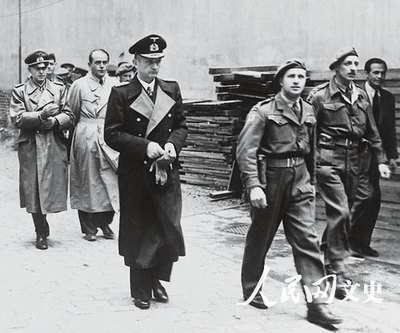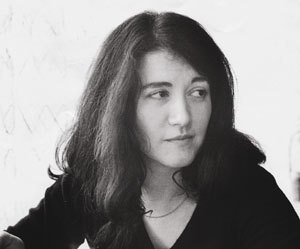伊尔莎・斯奇培尔莉(Elsa Schiaparelli)(1890-1973)生于意大利罗马。她被认为是20世纪最有名的服装设计师之一,也是一位作家。
伊尔莎・斯奇培尔莉_伊尔莎・斯奇培尔莉 -简介
伊尔莎 斯奇培尔莉的一样款式1927年在巴黎开设自己第一家服装设计沙龙,追求设计的创新性,她第一个
设计了护肩,毛皮织物和将拉链染成和衣服相同的颜色。她和当时很多艺术家,比如著名画家达利等人联系密切,并聘请他们参与纺织品的设计,把超现实主义风格引入服装设计中。二战之后,她的事业亏损。后宣告破产前往美国,并在美国同样获得巨大的事业成功。
伊尔莎・斯奇培尔莉_伊尔莎・斯奇培尔莉 -通往广场的路不止一条
《通往广场的路不止一条》这篇课文是美国作家伊尔莎・斯奇培尔莉写的,主要是写小时候父亲带她到罗马教堂塔顶,教导她“通往广场的路不止一条。生活也是这样。”,她从此就获得了一个深刻的启示。长大后,当她遇到困难时,能够不懈地坚持目标,并且做到了“此路不通走彼路”,从而获得成功,实现理想。《通往广场的路不止一条》告诉我们:通向成功的道路不止只有一条,有很多条。(本文被人教版五年级上册选中,是第14课)

伊尔莎・斯奇培尔莉_伊尔莎・斯奇培尔莉 -中文版本
有一次,父亲带着我,爬上教堂高高的塔顶。脚底下,星罗棋布的村庄环抱着罗马,如蛛网般交*的街道,一条条通往城市广场。“好好瞧瞧吧,亲爱的孩子,”爸爸和蔼地说,“通往广场的路不止一条。生活也是一样,假如你发现走这条路不能到达目的地的话,就可以走另一条路试试!”
此后,我一直把父亲的教导记在心间。
我的梦想是做一名时装设计师。
有一天,我遇到了一位朋友。她的毛衣颜色很素净,却编织得极为巧妙。
“多漂亮的毛衣呀!是自己织的吗?”我问道。
“不是,”她答道,“是维黛安太太织的,她在美国学的。”
突然,我的眼睛一亮,一个大胆的念头在脑海闪现:我为什么不从毛衣入手,自己设计、制作和出售时装呢?
我画了一张黑白蝴蝶花纹的毛衣设计图,请维黛安太太先织了一件。为了观察别人的反应,我穿着这件毛衣,参加了一个时装商人的午宴。结果,一家大商场的经理当场就向我订购了四十件,约定两星期内交货。我大喜过望,脚下仿佛踩着一朵幸福的云。
“两个星期要四十件?这根本不可能!”当我站在维黛安太太面前时,她说,“你要知道,织这么一件毛衣,我几乎要花上整整一个星期时间啊!”那朵幸福的云突然消失了,我只好垂头丧气地与她告辞。半路上,我猛然停住脚步,心想:这种毛衣虽然需要特殊技能,但在巴黎,一定还会有别的妇女会织的。我跑回维黛安太太家,向她讲了自己的想法。她觉得有道理。我同维黛安太太想尽办法,终于找到了二十位心灵手巧的妇女。两个星期以后,四十件毛衣从我新开的时装店装上开往国外的货轮。从此,一条时装的河流,源源不断地从我的时装店里流了出来。
后来,我计划举办一次大型时装展,但在离展出只有十三天的时候,缝纫姑娘们在另一家时装店的挑拨下跑光了。这回该从哪儿找到一条出路呢?看来,我的时装展不得不推迟了――不然,就只有展出未缝成的衣服了。对呀!我为什么不可以搞一个不是成衣的时装展呢?
时装展如期开幕。这真是一个与众不同的展览会――有的衣服没有袖子,有的只有一只袖子,有的还是一片布样。虽然我们展出的时装不是成衣,但从中仍然可以看出这些时装缝成后的颜色和式样。这次展览,激发了顾客的兴趣,前来订货的人络绎不绝。
父亲的教导让我一生受用不尽――通往广场的路不止一条!
伊尔莎・斯奇培尔莉_伊尔莎・斯奇培尔莉 -原文赏析
More Than One Way to the Squareb]We were standing at the top of a church tower. My father had brought me to this spot in a small Italian town not far from our home in Rome. I wondered why.“Look down, Elsa,” Father said. I gathered all my courage and looked down. I saw the square in the center of the village. And I saw the crisscross of twisting, turning streets leading to the square.
“See, my dear,” Father said gently. “There is more than one way to the square. Life is like that. If you can't get to the place where you want to go by one road, try another.”
Now I understood why I was there. Earlier that day I had begged my mother to do something about the awful lunches that were served at school. But she refused because she could not believe the lunches were as bad as I said.
When I turned to Father for help, he would not interfere. Instead, he brought me to this high tower to give me a lesson. By the time we reached home, I had a plan.
At school the next day, I secretly poured my luncheon soup into a bottle and brought it home. Then I talked the cook into serving it to Mother at dinner. The plan worked perfectly. She swallowed one spoonful and sputtered, “The cook must have gone mad!” Quickly I told what I had done, and Mother stated firmly that she would take up the matter of lunches at school the next day!
In the years that followed I often remembered the lesson Father taught me. I knew where I wanted to go in life. I wanted to be a fashion designer. And on the way to my first small success I found the road blocked. What could I do? Accept the roadblock5 and fail?Or use imagination and wits to find another road to my goal?
I had come to Paris, the center of the world of fashion, with my sketches6. But none of the famous fashion designers seemed interested in buying them. Then one day I met a friend who was wearing a very beautiful sweater. It was plain in color, but it had a lovely and unusual stitch.
“Did you knit that sweater?” I asked her.
“No,” she answered. “It was done by a woman here in Paris.”
“What an interesting stitch!” I continued.
My friend had an explanation. “The woman her name is Mrs. Vidian―told me she learned the stitch in Armenia, her native country.”
Suddenly I pictured a daring design knitted into such a sweater. Then an even more daring idea came to me. Why not open my own house of fashion? Why not design, make and sell clothes from the house of Schiaparelli! I would do it, and I would begin with a sweater.
I drew a bold black and white butterfly pattern and took it to Mrs. Vidian. She knitted it into a sweater. The result, I thought, was wonderful. Then came the test. I wore the sweater to a luncheon which people in the fashion business would attend. To my great pleasure, the sweater was noticed. In fact, the representative of a large New York store wanted 40 sweaters to be ready in two weeks. I accepted the order and walked out on a cloud of happiness.
My cloud disappeared suddenly, however, when I stood in front of Mrs. Vidian. “But it took me almost a week to knit that one sweater,” she said. “Forty sweaters in two weeks? It is not possible!”
I was crushed to be so close to success and then to be blocked! Sadly I walked away. All at once I stopped short. There must be another way. This stitch did take special skill. But surely there must be other Armenian women in Paris who knew how to do it.
I went back to Mrs. Vidian and explained my plan. She really didn't think it would work, but she agreed to help.
We were like detectives, Mrs. Vidian and I. We put ourselves on the trail11 of any Armenians who lived in Paris. One friend led us to another. At last we tracked down women, each of whom could knit the special stitch. Two weeks later the sweaters were finished. And the first shipment from the new house of Schiaparelli was on its way to the United States!
From that day a steady stream of clothes and perfumes12 flowed from the house of Schiaparelli. I found the world of fashion gay13 and exciting, full of challenge and adventure. I shall never forget one showing which was really a challenge. Once again Father's advice helped me. I was busy getting ready to show my winter fashions. Then just 13 days before the presentation the sewing girls were called out on strike. I found myself left with one tailor and woman who was in charge of the sewing room! I was as gloomy14 as my models and salesgirls. “We'll never make it,”one of them cried.
Here, I thought, is the test of all tests for Father's advice. Where is the way out this time? I wondered and worried. I was certain we would have to call off the presentation or else show the clothes unfinished. Then it dawned on15 me. Why not show the clothes unfinished?
We worked hurriedly. And, exactly 13 days later, right on time, the Schiaparelli showing took place.
What a showing it was! Some coats had no sleeves; others had only one. Many of our clothes were still in an early stage. They were only patterns made of heavy cotton cloth. But on these we pinned sketches and pieces of material. In this way we were able to show that what colors and textures the clothes would have when they were finished.
All in all, the showing was different. It was so different that it was a great success. Our unusual showing caught the attention of the public, and orders for the clothes poured in.
Father's wise words had guided me once again. There is more than one way to the square always.
 爱华网
爱华网



